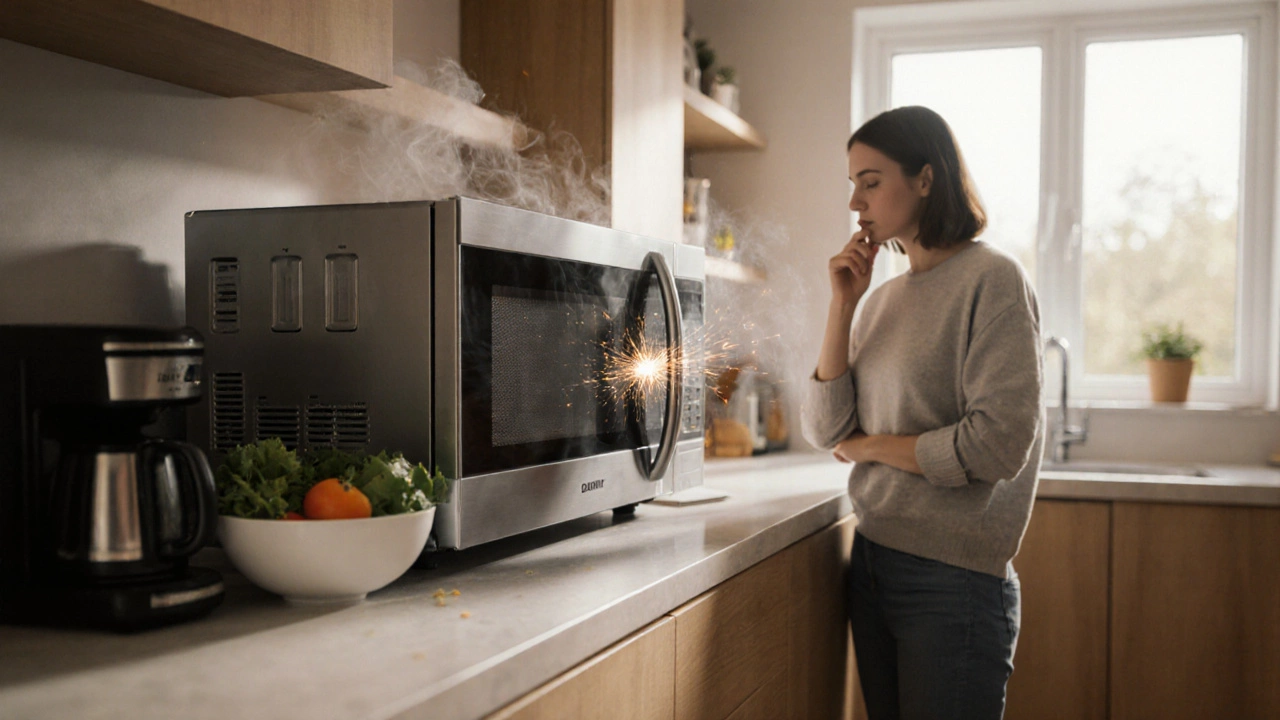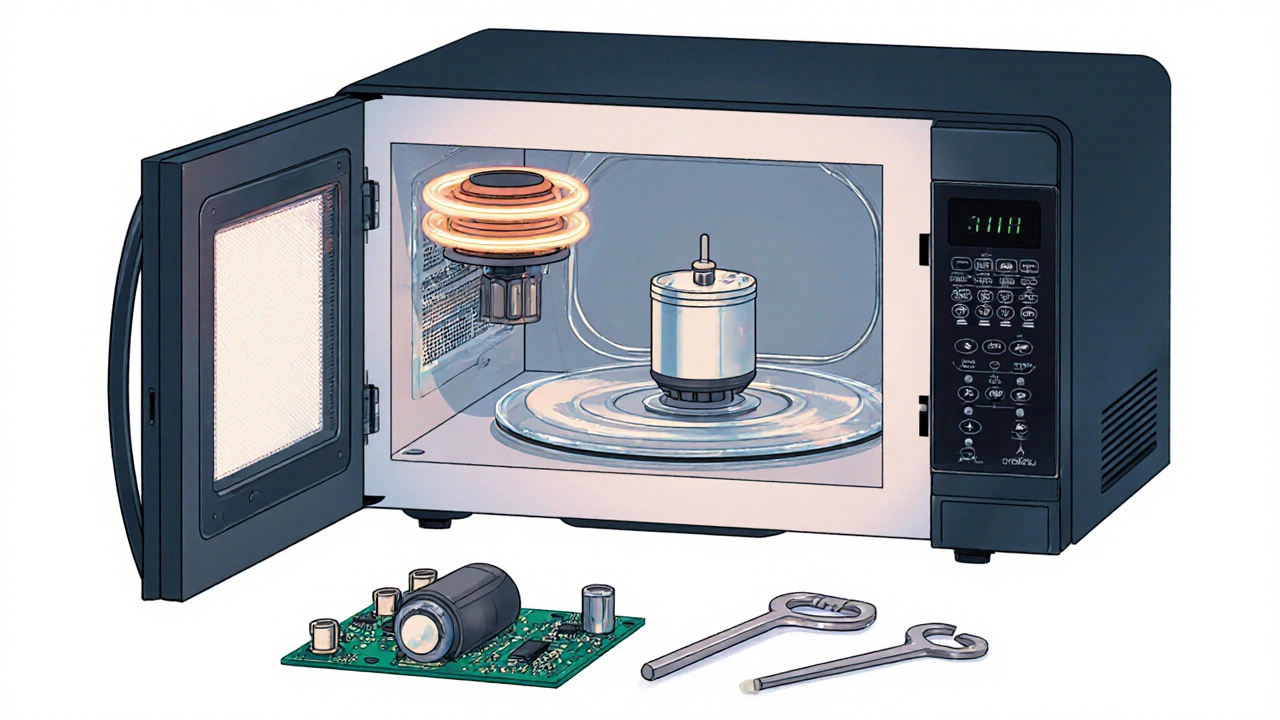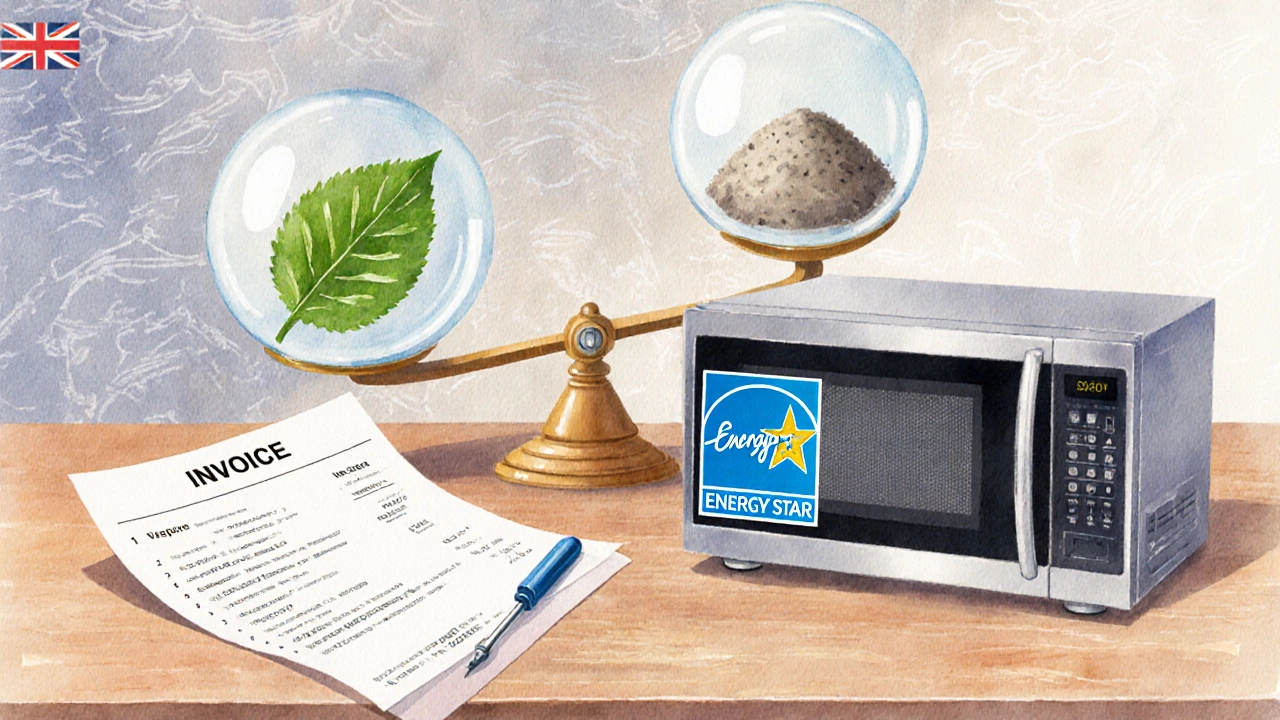Microwave Repair or Replace: Is It Worth It?

Microwave Repair vs. Replace Calculator
Microwave Decision Calculator
Pro Tip: Based on industry standards, repair is typically the better financial choice if the repair cost is 40% or less of the replacement cost.
When your kitchen’s main heat source sputters, sparks, or stops heating altogether, the first question that pops into most homeowners’ heads is whether to call a microwave repair pro or just buy a new unit. The answer isn’t a one‑size‑fits‑all; it depends on the fault, the age of the appliance, how much you’ll spend fixing it, and even the environmental impact of tossing it out.
Key Takeaways
- Repair is usually economical if the cost is under 40% of a comparable new microwave.
- Common issues like a failed magnetron or door switch often cost $70‑$150 to fix.
- Microwaves older than 8‑10years, or those that use more than 1100W, are prime candidates for replacement.
- Choosing repair over replace can cut e‑waste by up to 80% and save roughly 30kg of CO₂ emissions.
- Use the decision checklist below to weigh cost, safety, and performance before deciding.
Understanding the Cost Equation
To decide if a repair makes sense, start with a simple cost‑ratio calculation:
- Get a written estimate from a qualified service technician (a professional who specializes in microwave diagnostics and parts replacement).
- Research the price of a new microwave with similar size and power (average $120‑$250 for 0.9‑1.2cuft models).
- Divide the repair estimate by the replacement price. If the result is 0.4 (40%) or lower, repair is generally the better financial move.
Why 40%? Industry surveys show that most homeowners regret replacing a functional unit when repair costs fall under this threshold, especially considering the hidden cost of disposing of a large electronic device.
Common Microwave Problems & Typical Repair Costs
Not every glitch is created equal. Below are the most frequent faults, why they happen, and what you can expect to pay.
| Fault | Cause | Typical Repair Cost (USD) |
|---|---|---|
| Magnetron failure (the component that generates microwave energy) | Burnt out coil or internal short after years of high‑power use | $120‑$180 (parts + labor) |
| Door latch or switch (prevents the microwave from running when the door isn’t sealed) | Mechanical wear or broken plastic contacts | $40‑$80 |
| Turntable motor (drives the rotating plate) | Motor burnout or belt wear | $30‑$60 |
| Capacitor leakage (stores high voltage for the magnetron) | Age‑related dielectric breakdown | $50‑$90 |
| Control board failure (electronics that manage timing, power levels, and safety interlocks) | Moisture ingress or component burnout | $80‑$130 |
Note: Labor rates vary by region, but most reputable technicians charge $70‑$100 per hour. If a repair requires more than two hours, the cost ratio often tips in favor of replacement.

Age, Energy Use, and Expected Lifespan
A modern countertop microwave typically lasts 9‑12years when used 15‑20 minutes per day. Two key metrics help you gauge whether your unit is nearing the end of its useful life:
- Power rating (Wattage): Older models (<1000W) consume more electricity for the same heating result, bumping your utility bill by 5‑10%.
- Energy Star rating: Microwaves certified after 2010 use about 15‑20% less energy. If your appliance lacks this label, you’re likely paying more to run it.
Assuming an average electricity cost of $0.13/kWh, a 700‑W microwave running 30 minutes a day costs roughly $30 per year. Upgrading to a 1200‑W Energy Star model could shave $5‑$7 off that annual bill, translating to a payback period of 3‑5years when combined with repair savings.
Environmental Impact: Repair vs. Replace
Discarding a microwave adds to the growing e‑waste problem. According to the EPA, a single household microwave weighs about 30lb (≈13kg) of mixed metals and plastics. Recycling only 30% of that material recovers roughly 4kg of copper and 2kg of aluminum. By opting for repair, you avoid sending the bulk of those resources to landfill.
Carbon‑footprint calculators estimate that manufacturing a new 1‑cuft microwave emits roughly 80kg of CO₂. Extending the life of an existing unit through repair can cut that emission by up to 70%, especially if you choose a local technician who uses a hybrid vehicle for service calls.
Decision Checklist - Repair or Replace?
- Repair cost ≤ 40% of a comparable new model? If yes, repair wins.
- Age > 8‑10years? Consider replacement unless the issue is minor (e.g., door latch).
- Energy inefficiency? If the unit lacks Energy Star certification and uses >1000W, a newer model may save money long‑term.
- Safety concerns? Sparks, smoke, or erratic shut‑offs signal a serious electrical fault; replace to avoid fire risk.
- Availability of parts? Some older brands (e.g., Sharp 1990s models) have scarce components, driving up labor costs.
Run through the list and tally “yes” answers. Two or more positives usually point toward replacement.
DIY Fixes vs. Professional Service
For the handy homeowner, a few minor issues can be tackled without calling a pro:
- Replacing a worn turntable motor (approx. $15‑$25 for the part).
- Cleaning a faulty door latch with a small screwdriver set.
- Resetting a tripped thermal fuse (often a simple slide‑in component).
However, any repair involving the magnetron, capacitor, or high‑voltage circuitry should be left to a certified service technician (licensed professional equipped to handle high‑voltage components safely). Not only is there a risk of electric shock, but improper handling can void warranties and lead to fire hazards.

When Repair Makes Sense
- Price tag under $80 for a door latch or turntable motor.
- Unit is under 7years old and has Energy Star rating.
- Parts are readily available and the repair can be completed in a single service visit.
When to Say Goodbye and Replace
- Magnetron replacement cost exceeds $150, pushing total repair above 50% of a new model.
- Microwave shows signs of internal corrosion, rust, or water damage.
- Age exceeds 10years and energy consumption is notably higher than modern equivalents.
- Frequent breakdowns (more than two major issues in three years).
Bottom Line
The smart route is to treat each microwave individually. Run the cost‑ratio test, check the age and energy rating, and weigh safety concerns. In many cases-especially for minor mechanical issues-a quick repair saves money and keeps waste out of landfills. But once the core high‑voltage parts start failing on an older, power‑hungry unit, replacing it with a fresh, Energy Star‑rated model is both financially and environmentally wiser.
Frequently Asked Questions
How long does a typical microwave repair take?
Most common fixes-door latch, turntable motor, or capacitor-can be completed within 60‑90 minutes. Magnetron or control‑board replacements usually require two hours, including diagnostics.
Is it safe to repair a microwave myself?
DIY repairs are okay for low‑voltage components like the turntable motor or door latch. Anything involving the magnetron, high‑voltage capacitor, or internal wiring should be handled by a certified technician to avoid electric shock or fire.
What’s the average lifespan of a countertop microwave?
When used for about 15‑20 minutes per day, most modern microwaves last 9‑12years. Heavy‑use commercial‑grade units may reach 15years, while low‑quality models can fail as early as 5years.
How much CO₂ can I save by repairing instead of replacing?
Manufacturing a new microwave emits roughly 80kg of CO₂. Repairing an existing unit avoids most of that footprint, cutting emissions by 55‑70% depending on the part replaced.
When should I consider recycling my broken microwave?
If the repair estimate exceeds 60% of a new unit’s price, or if the appliance is older than 10years with signs of corrosion or burnt components, recycling is the responsible choice. Many local waste‑management programs accept large appliances for free.


Write a comment